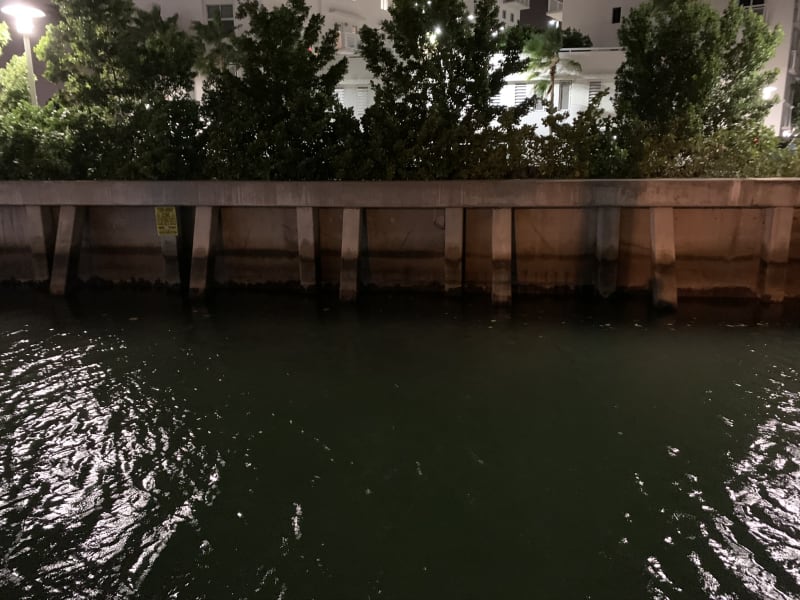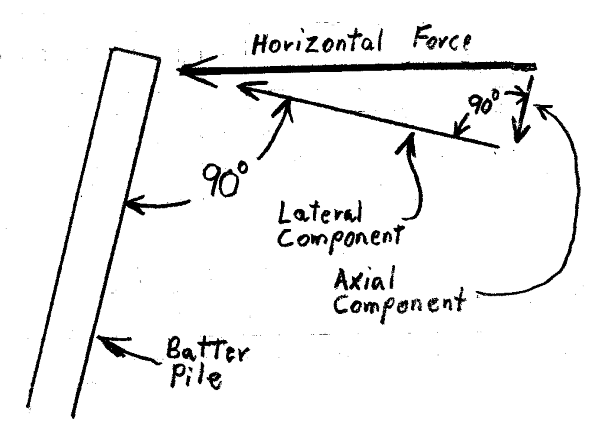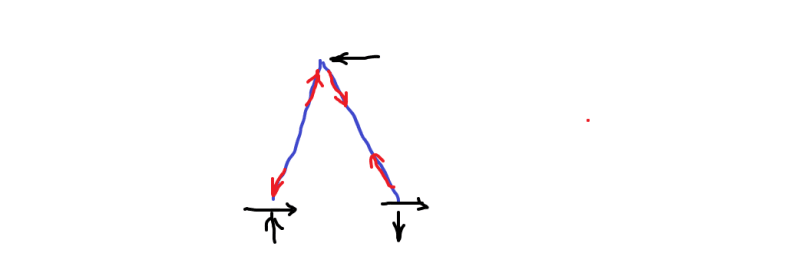WaterfrontPE
Coastal
- Mar 30, 2020
- 6
Hi all,
A number of bulkhead projects I have seen recently (particularly residential) utilize a concrete pile and panel system (in the style of a soldier pile wall) for shoreline stabilization. Instead of anchors or deadmen, they are utilizing concrete piles driven on a positive batter as a brace. The whole system is tied together with a concrete cap. (Note: this is not in a high-seismic area).
Some of the design guidance I have found on this seems to indicate that the horizontal reaction force transferred to the top of the batter pile can be resolved into an axial load for analysis, based upon the batter angle. The lateral load would then be balanced by the lateral components of skin friction and end bearing, dictating the pile length.
My concern with this methodology is that it treats it as a pure compression pile and does not consider the flexure in the pile. For deeper waters/higher walls with longer unbraced lengths, this can be very significant. What is the proper method to resolve the horizontal reaction at the head of the pile into axial/transverse loads on the pile, and how does this influence uplift/overturning of the whole vertical pile/panel/batter pile/cap system?
Any thoughts on this are welcome. Photo below to illustrate the type of wall to which I am referring.
Thanks

A number of bulkhead projects I have seen recently (particularly residential) utilize a concrete pile and panel system (in the style of a soldier pile wall) for shoreline stabilization. Instead of anchors or deadmen, they are utilizing concrete piles driven on a positive batter as a brace. The whole system is tied together with a concrete cap. (Note: this is not in a high-seismic area).
Some of the design guidance I have found on this seems to indicate that the horizontal reaction force transferred to the top of the batter pile can be resolved into an axial load for analysis, based upon the batter angle. The lateral load would then be balanced by the lateral components of skin friction and end bearing, dictating the pile length.
My concern with this methodology is that it treats it as a pure compression pile and does not consider the flexure in the pile. For deeper waters/higher walls with longer unbraced lengths, this can be very significant. What is the proper method to resolve the horizontal reaction at the head of the pile into axial/transverse loads on the pile, and how does this influence uplift/overturning of the whole vertical pile/panel/batter pile/cap system?
Any thoughts on this are welcome. Photo below to illustrate the type of wall to which I am referring.
Thanks



![[idea] [idea] [idea]](/data/assets/smilies/idea.gif)
